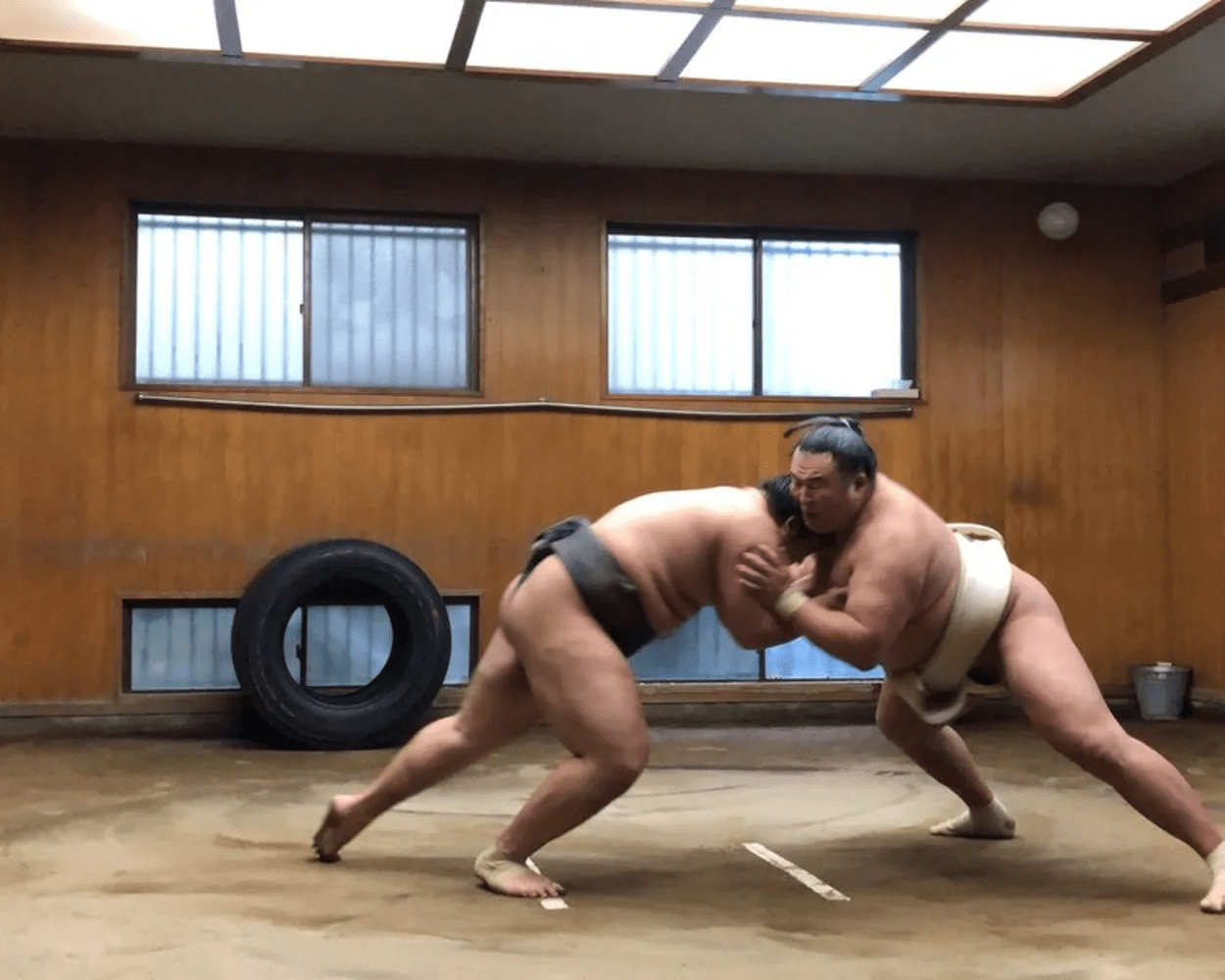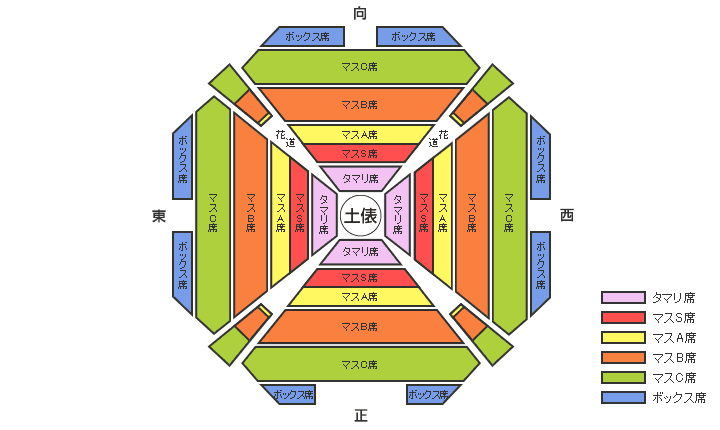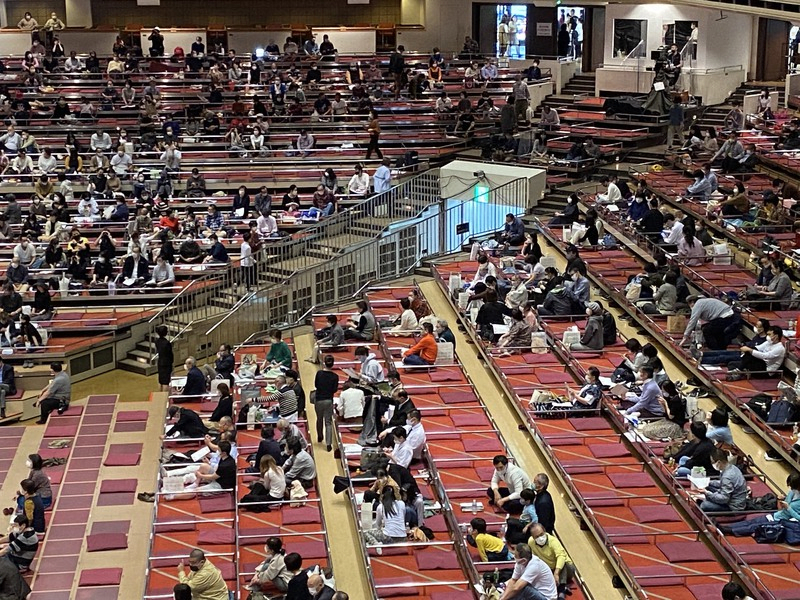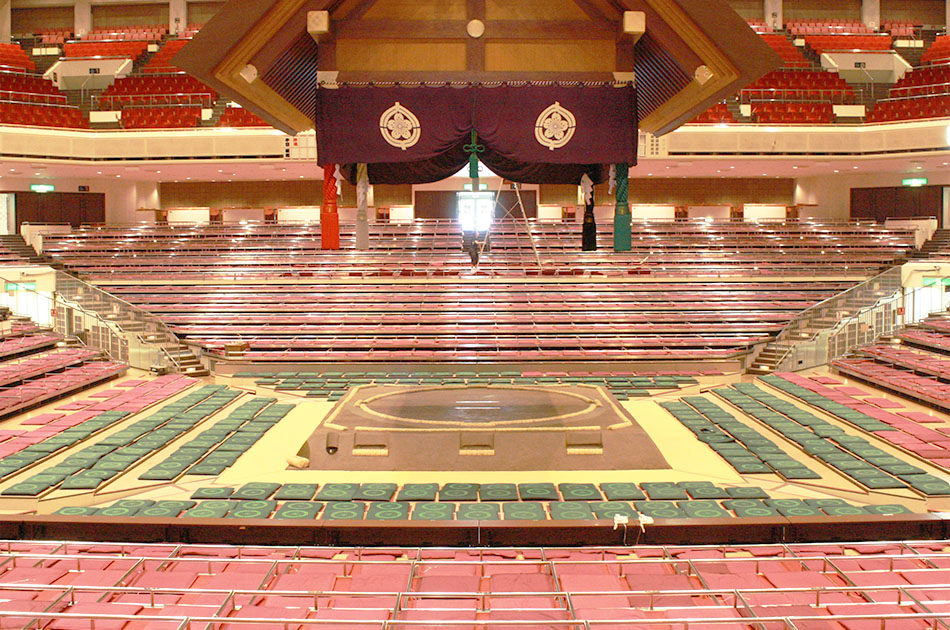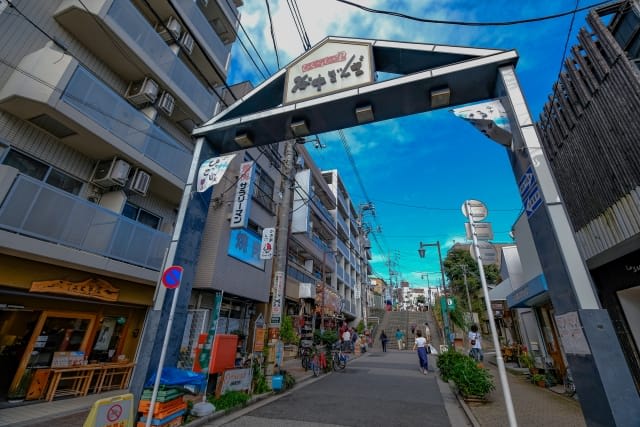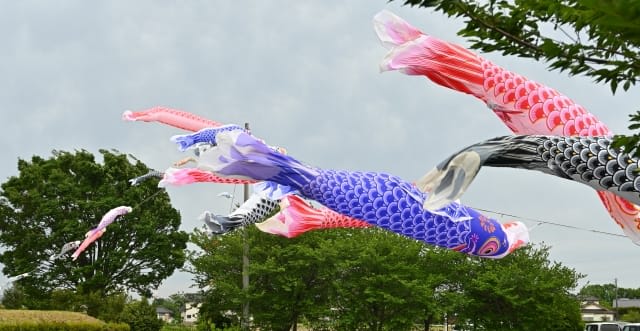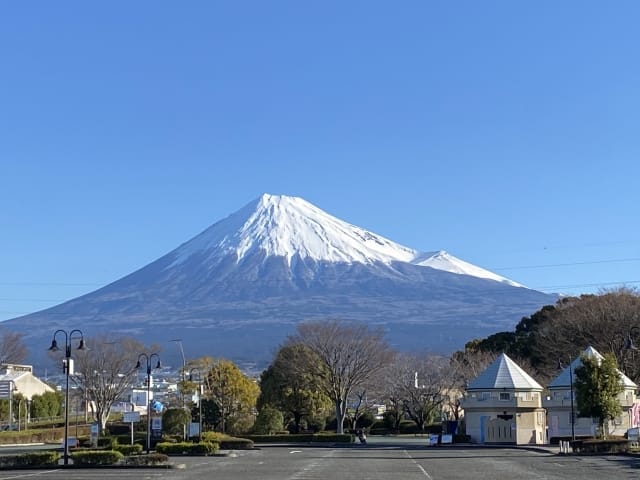How to Enjoy Sumo in Japan: A Complete Beginner’s Guide to Matches, Culture & Etiquette
The uniqueness of Japanese culture lies in the coexistence of ancient traditions and modern innovation. From tea ceremony and flower arrangement that have been passed down for over a thousand years, to cutting-edge anime and technology, Japan has cherished its distinctive aesthetics and values. Among Japan's traditional cultures, what particularly stands out is the national sport of "sumo," which has over 1,500 years of history.
More than just a sport, sumo is a fusion of Shinto rituals, samurai spirit, and Japanese aesthetic sense that continues to fascinate many people to this day.
Tokyo's Ryogoku district is known as the "holy land of sumo," and during the tournaments held in January, May, and September each year, many spectators from both domestic and international locations visit the Kokugikan arena. Not only are the wrestlers' powerful matches captivating, but each traditional gesture such as shiko (foot stamping) and salt throwing has deep meaning, and knowing these meanings expands the enjoyment of watching sumo manifold.
This article provides detailed information on how to enjoy sumo more deeply, from ticket acquisition methods to viewing etiquette and wrestlers' lifestyles, for those who feel anxious thinking "I want to enjoy sumo in Japan, but I have absolutely no knowledge about sumo." After reading this, you too will become a sumo expert and be able to fully appreciate this uniquely Japanese traditional culture.
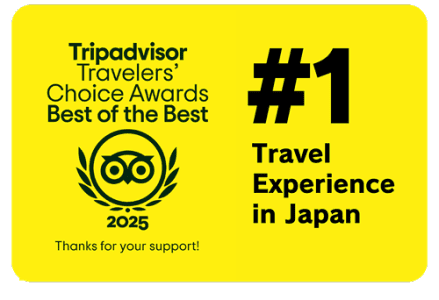
Sumo: Japan's National Sport Established During the Edo Period (1603-1867)
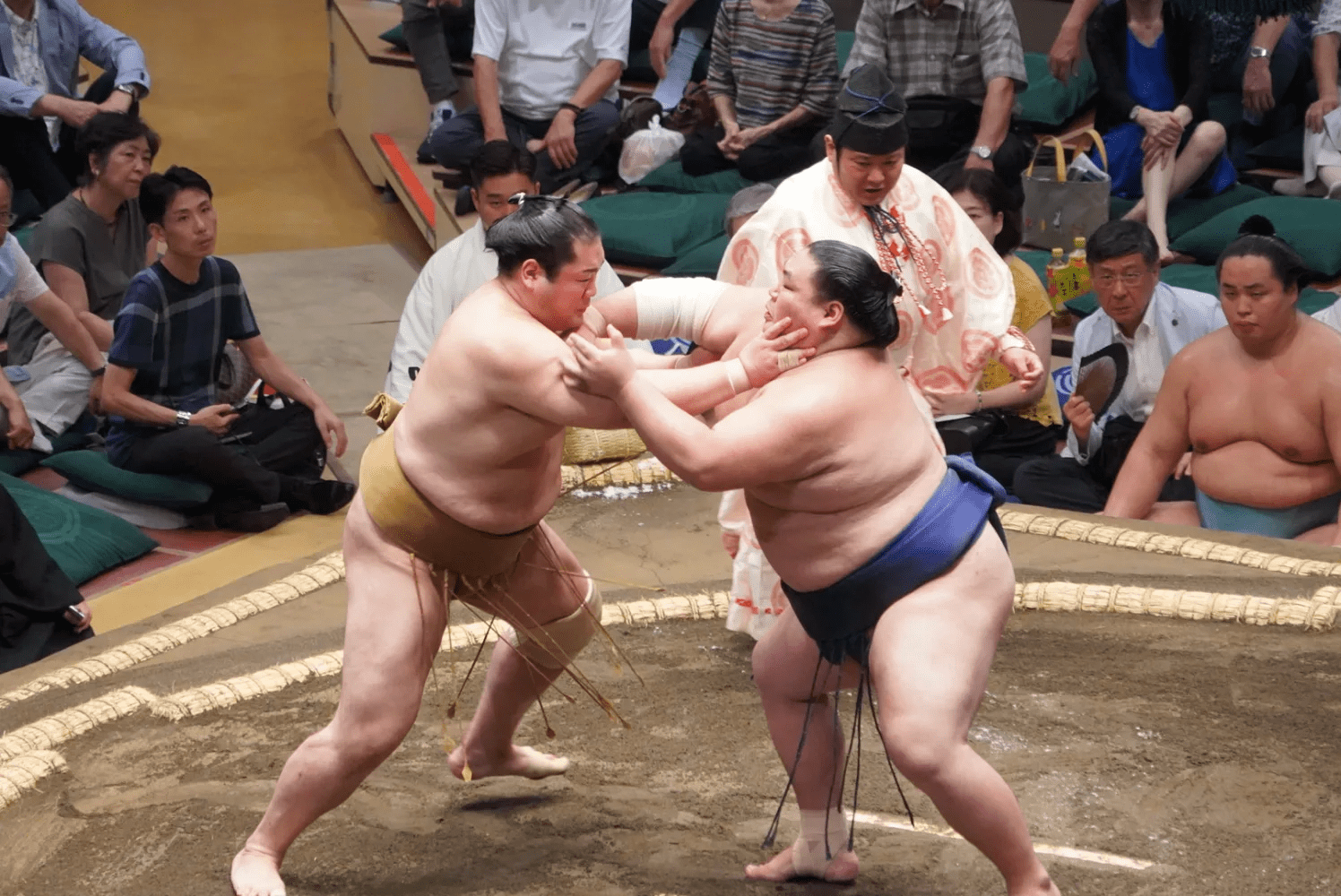
Sumo is Japan's traditional national sport whose modern form was established during the Edo period. It has been carefully passed down to this day as an important part of Japanese culture that fuses Shinto rituals and traditional culture, rather than being merely a sport.
While sumo existed before the Edo period, it was during the Edo period that competitive sumo developed and current rules and traditions were established. Under the protection of the shogunate at that time, regular tournaments began to be held nationwide as entertainment for common people, and wrestlers gradually gained status as celebrities.
Currently, tournaments are held according to the following schedule:
- January Tournament: January 12 (Sun) - January 26 (Sun) - Kokugikan (Tokyo, Ryogoku)
- March Tournament: March 9 (Sun) - March 23 (Sun) - Edion Arena Osaka (Osaka Prefectural Gymnasium)
- May Tournament: May 11 (Sun) - May 25 (Sun) - Kokugikan (Tokyo, Ryogoku)
- July Tournament: July 13 (Sun) - July 27 (Sun) - IG Arena (Aichi International Arena, Nagoya)
- September Tournament: September 14 (Sun) - September 28 (Sun) - Kokugikan (Tokyo, Ryogoku)
- November Tournament: November 9 (Sun) - November 23 (Sun) - Fukuoka International Center (Fukuoka)
History of Sumo
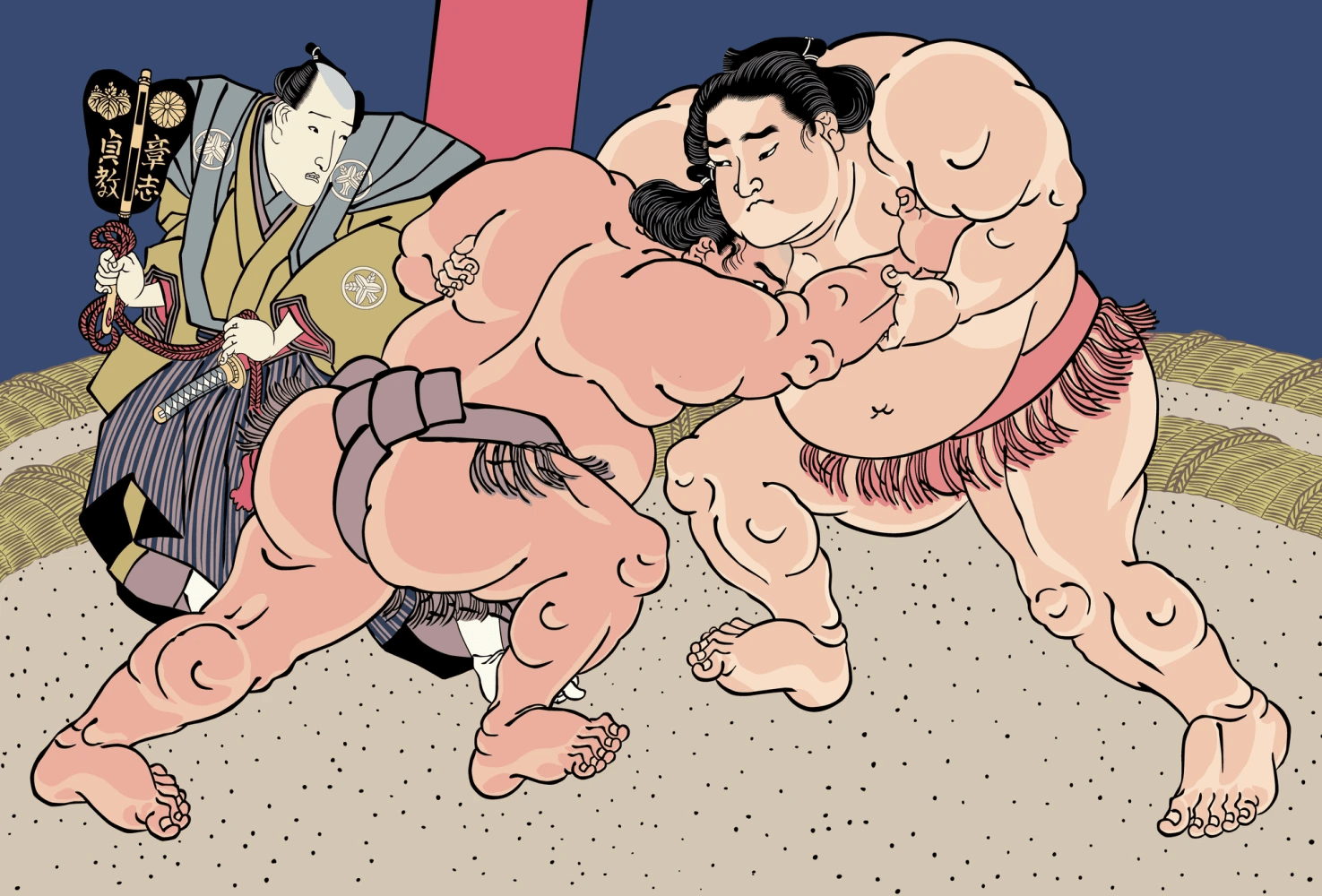
The origins of sumo are very ancient, with descriptions already found in Japan's oldest historical records, the "Kojiki" (712 AD) and "Nihon Shoki" (720 AD). Initially, it was performed as a Shinto ritual to pray for abundant rice harvests or to divine that year's harvest.
Ancient sumo had a strong character as a dedication ritual to the gods, and it changed as time progressed. During the Nara and Heian periods, it became a court event and was dedicated before the emperor. When the warrior era began, physical strength became an important skill for warriors, and samurai families began employing sumo wrestlers.
When the Edo period began, sumo developed greatly. What was once a sport enjoyed only by wealthy and powerful people became popular among the masses as well. Sumo performances were frequently held in Edo (present-day Tokyo), Osaka, and Kyoto, and popularity grew along with the sale of nishiki-e prints depicting wrestlers and sumo scenes.
However, increased popularity also brought problems, and the government of that time often issued orders banning sumo. Therefore, sumo organizers established rules, created the forty-eight sumo techniques, and set up the circular dohyo (ring) still used today. (There are actually 82 winning techniques)
The stable system for training wrestlers was also established, and many aspects of old Japan such as topknots, traditional clothing, and ancient customs were preserved, making professional sumo more than just a sport—a living example of traditional Japanese culture.
Even after the Meiji period, sumo continued to develop as Japan's national sport, and today it receives high acclaim both domestically and internationally, playing an important role in transmitting Japanese culture to the world.
Author's Direct Teaching! Four Things You Should Know for How to Enjoy Sumo
Understanding several key elements will transform sumo from simply watching large men pushing each other to experiencing the appreciation of rich cultural tradition.
The charm of sumo lies in the perfect harmony between comprehensible rules and deep cultural significance. Through rituals that have remained unchanged for centuries, sumo viewing provides visitors with a valuable opportunity to glimpse traditional Japanese values such as respect, discipline, and devotion.
Let's look at four important points you should know to fully enjoy and understand this fascinating sport, which is essential knowledge for how to enjoy sumo to its fullest.
Understanding the Rules (However, They Are Very Easy to Understand)
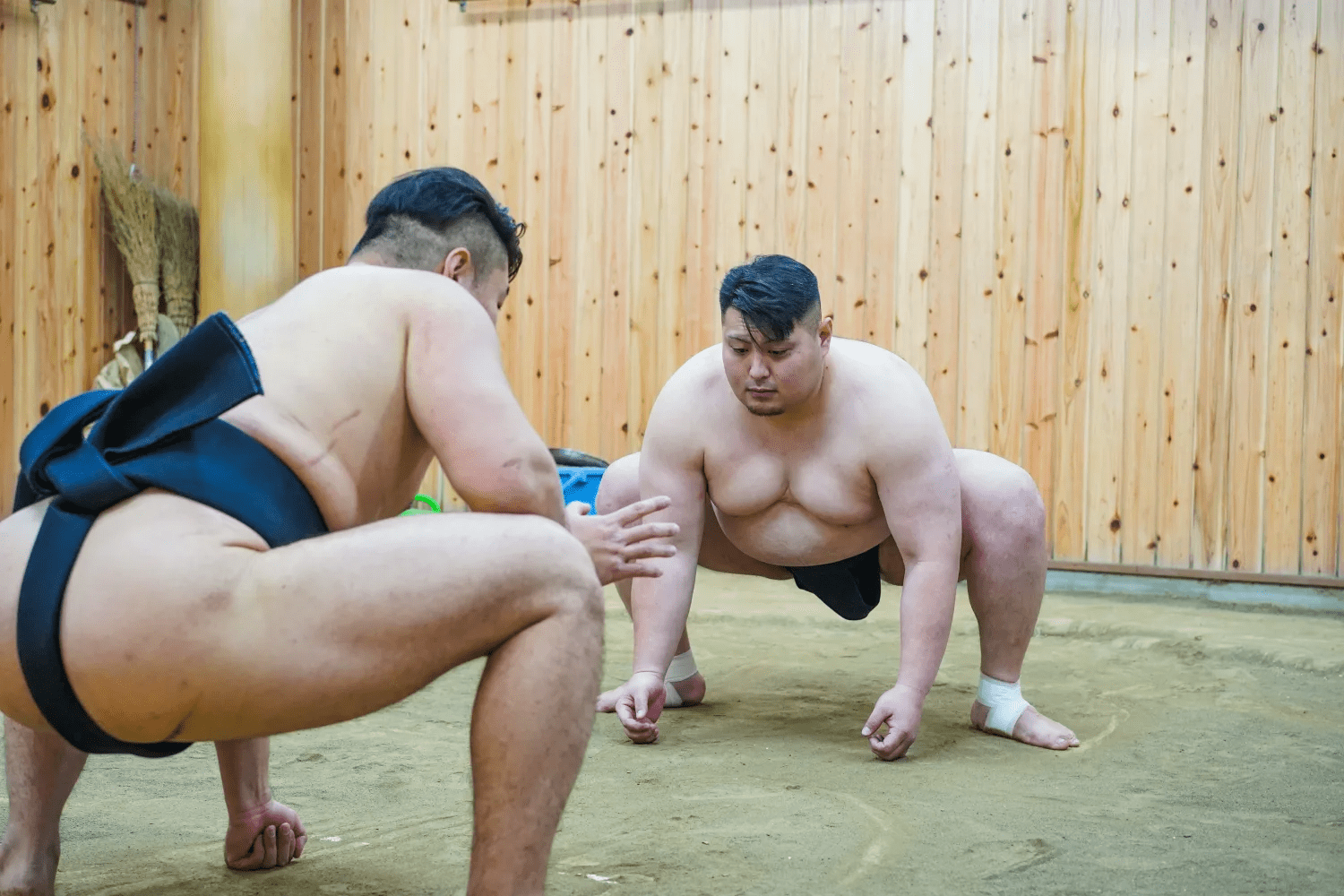
The basic rules of sumo are surprisingly simple and easy to understand for first-time spectators who know nothing about the sport. The winner is determined when the opponent either goes outside the circular ring (dohyo) or when any part of their body other than the soles of their feet touches the ground.
What creates excitement from these simple rules is how quickly matches develop. Most bouts end in seconds, though some involve intense battles lasting over a minute. This simplicity allows focus on strategy and technique rather than complex scoring systems.
The main rules to remember are:
- Victory by pushing out: Push or guide the opponent outside the circular ring
- Victory by throwing down: Make any part of the opponent's body other than the soles of their feet touch the ground
- Prohibited techniques: Pulling hair, punching, choking, or grabbing the groin area of the mawashi (belt) are forbidden
Technically, 82 winning techniques (kimarite) are recognized, but as a spectator, knowing just these basic principles is sufficient to understand what's happening. The beauty of sumo lies in how, despite these simple rules, the combination of strategy, technique, strength, and agility creates infinitely fascinating matches.
Watch how smaller wrestlers use speed and technique to defeat larger opponents, and how wrestlers of different body types use various strategies to leverage their respective strengths. With this understanding, every bout becomes more captivating even when watching sumo for the first time.
Grand Sumo Tickets Can Sell Out
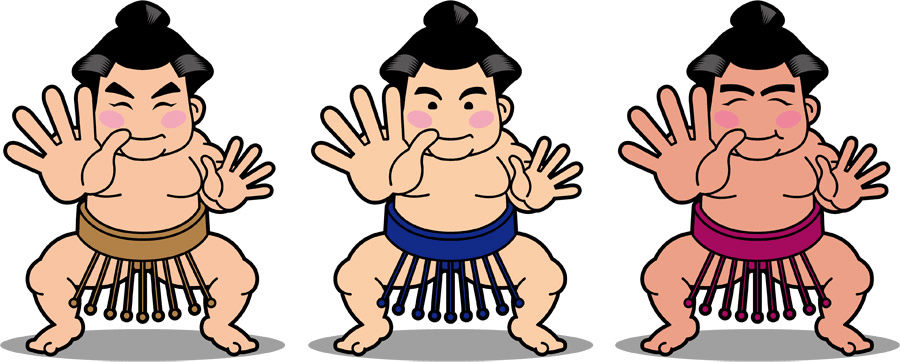
If watching sumo in Japan is on your bucket list, advance planning for tickets is essential. Sumo tournaments (basho) are held only six times per year—three times in Tokyo (January, May, September) and once each in Osaka (March), Nagoya (July), and Fukuoka (November). Due to these limited opportunities, tickets, especially for weekends and holidays, can sell out quickly.
For the best experience, we recommend purchasing tickets in advance, particularly if you're aiming for good seats or popular dates. Demand fluctuates based on several factors:
- Tournament schedule: Weekends and senshuraku (final day) are most popular
- Seating options: Premium seats close to the ring sell out first
- Active sumo stars: Tournaments featuring popular wrestlers have high demand
While same-day tickets may be available, there's a system where people line up very early in the morning, which requires arriving extremely early and offers no guarantee. If you're visiting Japan specifically to see sumo, we strongly recommend securing tickets in advance.
Several websites now offer ticket purchasing services in English for foreign tourists, making the process much easier than before. Some tour companies also offer packages that include sumo tickets along with guide services to enhance understanding of the viewing experience.
Remember that a day's tournament runs from morning to evening, but the makuuchi matches (bouts of the highest-skilled wrestlers) begin around 4 PM, with the highest-ranked wrestlers competing just before 6 PM.
This comprehensive guide on how to enjoy sumo provides tourists with all the essential information needed to fully appreciate this magnificent Japanese cultural experience.
There are Two Distinctive Types of Viewing Seats
Source:Japan Sumo Association
To maximize your enjoyment of sumo wrestling, it's important to choose the seating type that suits you best. Sumo tournament viewing offers two distinctively different types of seats: "Masu-seki" and "Tamari-seki," each with different characteristics and attractions. (There are also regular chair seats and box seats available)
Additionally, some venues also provide regular chair seating alongside the two types mentioned above.
The choice among these three types of seating will greatly influence the quality of your sumo experience. Particularly for foreign tourists, considering factors such as unfamiliarity with traditional Japanese sitting styles, budget, and viewing preferences will enable a more fulfilling sumo viewing experience.
This time, we will provide detailed explanations of the characteristics and important points to note for both "Masu-seki" and "Tamari-seki."
Characteristics of Masu-seki
Source:Mainichi Shimbun
Masu-seki are traditional Japanese tatami-style seats where you sit on cushions placed on the floor in either seiza (kneeling) or cross-legged position. These seats are arranged in square compartments (masu) separated by low wooden partitions, typically accommodating 4-6 people, and offer the charm of experiencing authentic Japanese culture.
The main point to note is that you'll be sitting on the floor for extended periods. Foreign tourists especially may experience leg and back pain during several hours of sumo viewing, as they're not accustomed to seiza or cross-legged sitting. Since sumo tournaments can continue from morning until evening, it's recommended to plan your viewing time considering physical comfort.
Here are tips for enjoying Masu-seki more comfortably:
- Stand up regularly: Standing up and stretching between matches can prevent your legs from falling asleep.
- Bring cushions: Having thin additional cushions can improve comfort during long periods sitting on the hard floor.
- Wear comfortable clothing: Loose-fitting clothes are more suitable for extended seiza or cross-legged sitting than tight jeans.
Masu-seki are ideal for budget-conscious travelers and families or groups who want to watch together. They're also an excellent choice for those who want to experience the traditional Japanese viewing style.
Characteristics of Tamari-seki
Source:Japan Sumo Association
Tamari-seki are premium seats located right next to the sumo ring, offering the special experience of watching the powerful matches of wrestlers from the front row. These cushion seats are also called "sand-covered seats" (sunakabu-ri).
The greatest attraction of Tamari-seki is the immersive experience where you can feel the wrestlers' breathing and hear the sound of their bodies colliding up close. However, this proximity comes with points to be aware of. Wrestlers sometimes fall from the ring, and you need to consider the possibility of wrestlers weighing over 100kg crashing into the spectator area.
Important points when watching from Tamari-seki include:
- Maintain courteous behavior: As these seats often appear on television broadcasts, dignified conduct is required.
- Stay constantly alert: Since wrestlers may fall from the ring, watch without letting your guard down.
- Don't touch the wrestlers: Even when in close proximity, never touch wrestlers or engage in distracting behavior.
- Follow photography rules: Flash photography is prohibited as it can disrupt wrestlers' concentration.
- Dress appropriately: As these are premium seats, avoid overly casual attire.
Tamari-seki are perfect for photography enthusiasts who want to capture powerful shots and those who want to experience sumo's strength and technique up close. While tickets are expensive and highly competitive, many tourists choose this special seating for a "once-in-a-lifetime experience."
However, keep in mind that Tamari-seki are popular and currently difficult to reserve.
If you're not comfortable sitting for long periods, booking "chair seats," the third seat type, is recommended.
There Are Few Strict Rules, But Multiple Manners Must Be Observed
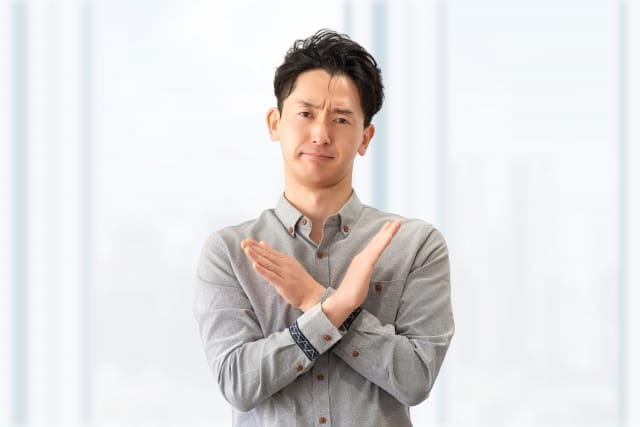
Sumo is deeply rooted in tradition and ceremony, and showing appropriate respect enhances the experience for everyone, including yourself. When watching sumo, you need to follow specific rules and manners that differ from other sports.
The most important manners to remember include:
- During matches: Remain quiet, especially during crucial moments before the initial charge
- Photography: Photography is permitted inside the hall, but prohibited in specific premium seats near the ring (first through seventh rows)
- Respect for wrestlers: Don't touch wrestlers or approach them for photos or autographs without proper permission
- Seating etiquette: If sitting in traditional floor seats (Masu-seki), be prepared to sit cross-legged for extended periods
- Food and drink: Eating and drinking are generally permitted, but outside food and alcohol are prohibited, and consumption is completely banned in seats closest to the ring
Understanding that sumo is not merely entertainment but a cultural institution with religious elements helps explain why certain behaviors are expected. The formalities surrounding sumo reflect Japanese values of respect and proper conduct.
For foreign tourists, comfortable yet neat attire is appropriate. While there's no strict dress code for spectators, extremely casual clothing might feel out of place, especially in good seats where many Japanese fans dress somewhat formally.
By respecting these customs, you not only demonstrate understanding of Japanese culture but also ensure a more authentic and enjoyable experience for yourself and those around you.
How to Get Sumo Tickets
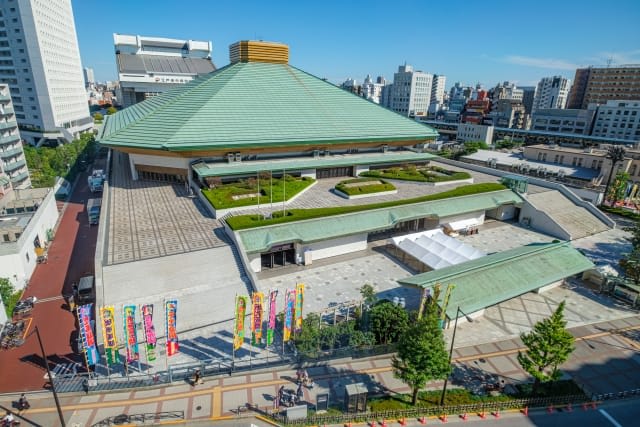
To enjoy sumo wrestling, first obtaining appropriate tickets is crucial. Tournament tickets are popular, especially for weekends and opening/closing days, which sell out quickly, so planned purchasing is necessary.
There are multiple methods for purchasing tickets, each with advantages and disadvantages. Even foreigners who don't understand Japanese can now obtain tickets relatively easily through English-supported websites and tour companies.
Let's examine the main methods for obtaining sumo tickets in detail.
Purchasing from the official website is the most reliable method.
The Japan Sumo Association's official site generally begins advance ticket sales one month before each tournament.
The official site's advantages include checking the latest seating availability and relatively low fees. However, popular dates often sell out immediately after online sales begin, so it's recommended to check the sale date and time in advance and prepare to access at that exact time.
You can also purchase tickets at convenience stores.
If you're staying in Japan, you can buy tickets using Seven-Eleven's multi-copy machines.
The operation is relatively simple, but screen displays are basically in Japanese only, so those who can't read Japanese should consider having a Japanese friend accompany them or consider the next method introduced.
There's also the option of using travel agencies or hotel concierge services.
Foreign visitors to Japan can arrange tickets through major travel agencies like JTB or HIS, or through their hotel's concierge service.
The benefit of this method is that English-speaking staff can support the process even if you don't speak Japanese. Additionally, even when the official site is sold out, you might be able to purchase from allocations secured by travel agencies.
However, note that additional fees are added, making it more expensive than purchasing from the official site.
There's also the option of purchasing same-day tickets.
Popular dates sometimes have lines forming from early morning, but if you don't give up, you can obtain them. While there's no guarantee of obtaining tickets, if you absolutely want to see sumo and couldn't get advance tickets, line up early in the morning to purchase same-day tickets.
Apply for Tours That Let You Enjoy Sumo Viewing Without Worrying About Ticket Acquisition
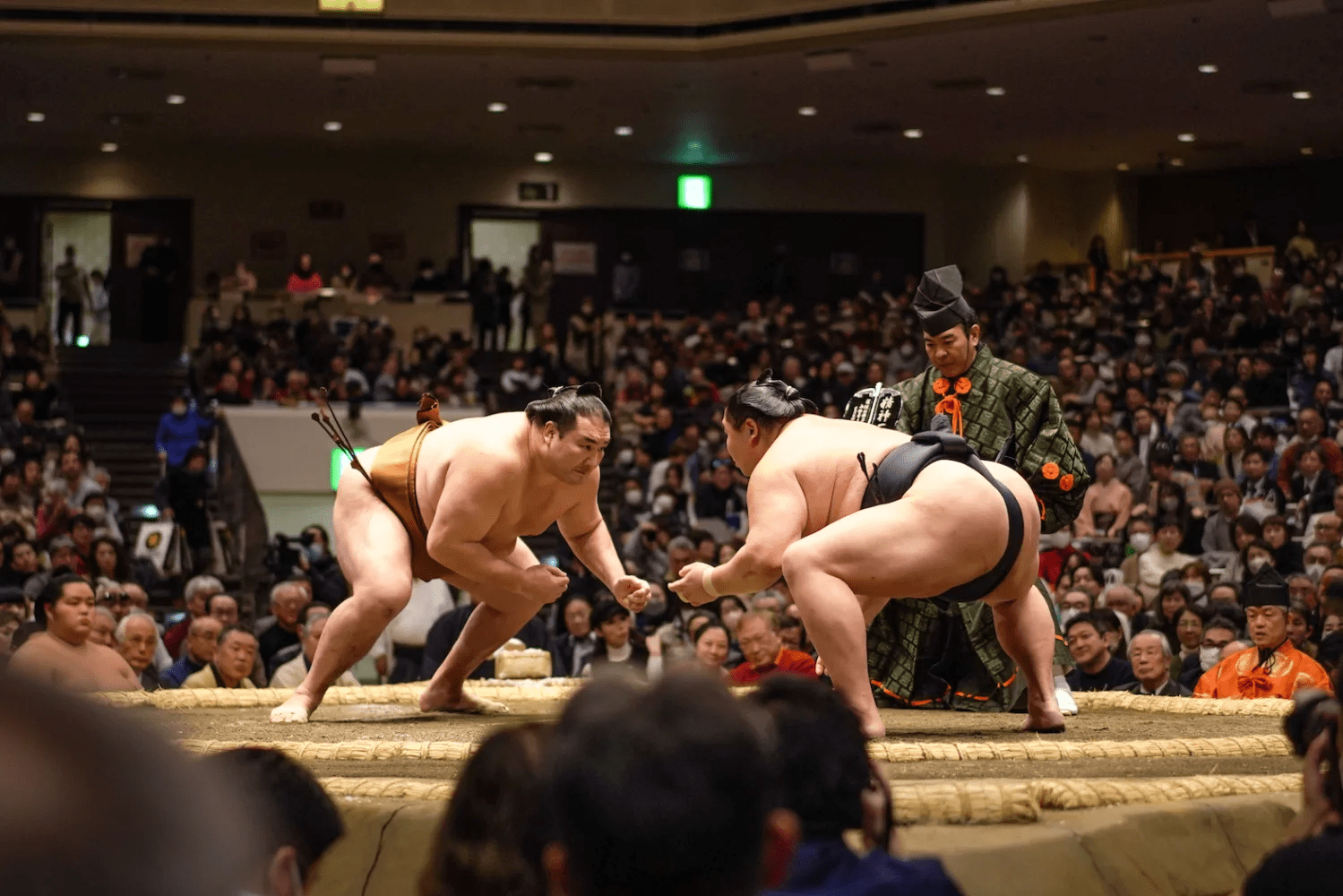
(※Now, Ticket of Tours are partly unavailable)
For foreign tourists who want to maximize their enjoyment of sumo wrestling, participating in specialized tours is the most secure and fulfilling option. Tours not only free you from the hassle of ticket arrangements but also provide explanations to understand sumo's deep attractions, allowing you to fully enjoy even your first viewing experience.
The greatest appeal of sumo viewing tours is being able to enjoy sumo without worrying about language barriers. Guides who speak English (and sometimes other languages) and are knowledgeable about Japanese traditional culture accompany you, providing detailed explanations about sumo history, wrestler backgrounds, and match highlights.
Let's examine the types of representative sumo viewing tours and their characteristics.
The most common type is basic viewing tours that combine ticket arrangements with viewing guides.
In this type of tour, you gather at a designated location, head to Kokugikan as a group, and enjoy sumo viewing with a guide.
Tours like Magical Trip's "Tokyo: Sumo Guided Tour with Premium Sumo Tournament Ticket" include programs where you explore Ryogoku while learning about sumo history and culture, then watch actual tournament matches. A major attraction of this particular tour is that good seats in the S-seat second floor are secured.
Tour guides provide knowledge unavailable with tickets alone, covering everything from basic sumo rules to match highlights, wrestlers' lifestyles, and traditions. They also respond to questions at any time, so you can resolve doubts on the spot, which is a major benefit.
Participation fees typically range from 8,000 to 15,000 yen, including ticket costs, guide fees, and materials. Many tours allow you to choose seat grades according to your budget, so select a plan that matches your preferences.
For those who want to experience sumo outside tournament periods or delve deeper into sumo culture, morning practice viewing tours are recommended.
Morning practice viewing tours allow you to visit sumo stables normally inaccessible to the general public and observe wrestlers' morning practice up close. This is a precious experience where you can glimpse the wrestlers' strict practice sessions and aspects of stable life.
Being able to observe morning practice, which even many Japanese people have never actually seen, is truly a very special experience. If you're lucky, you might even get commemorative photos with wrestlers after practice.
For those seeking more authentic sumo experiences, there are also tours where you can actually experience sumo techniques.
3 Things to Know to Better Enjoy Sumo (How to Enjoy Sumo)
There are three important points you should know when watching sumo wrestling. By understanding these, you'll be able to enjoy sumo not just as "big wrestlers pushing each other around," but as a profound and fascinating national sport with deep cultural significance.
Sumo is not merely a sport, but a Japanese traditional culture with over 1,500 years of history. Sumo "originated as a Shinto ritual to entertain the gods," and every gesture and movement of the wrestlers carries deep meaning.
Below, we'll explain in detail the wrestlers' pre-match preparations, the psychological tactics during matches, and their behavior before and after contests.
Sumo Wrestlers Perform Various Preparations for Their Matches
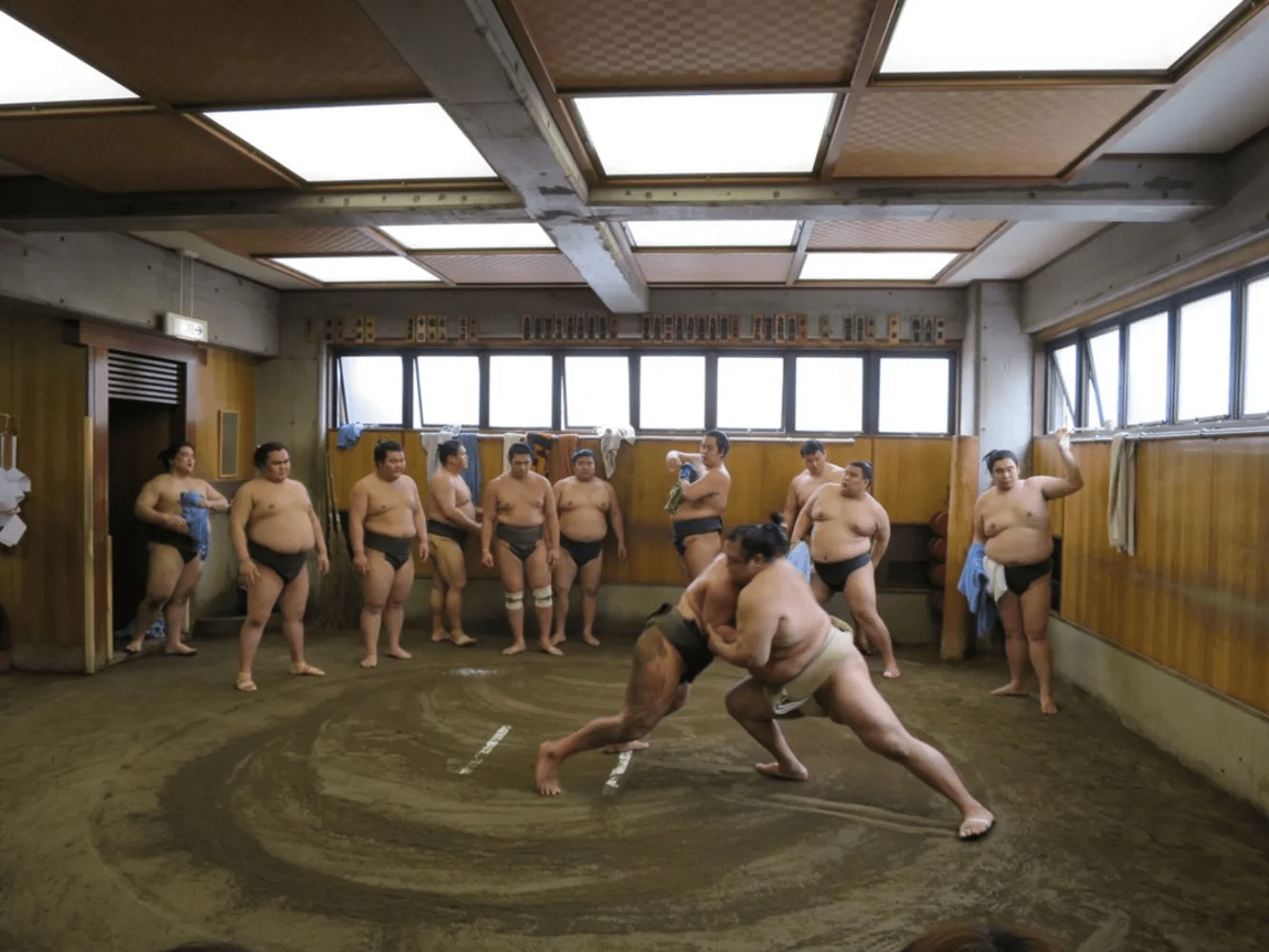
Sumo wrestlers undergo strict daily preparation and training to deliver peak performance in matches. While many people tend to focus only on the wrestlers' physique, behind them lie two important pillars: systematic dietary management and rigorous training.
The wrestlers' preparation is not aimed at simple weight gain. Through traditional diet and training methods, they achieve an exquisite balance of muscle and body fat necessary for sumo. In fact, top-level wrestlers possess remarkable speed, balance, and flexibility that contradicts their appearance.
Morning practice and traditional diet are essential for sumo match preparation. Let's examine these two crucial elements in detail below.
Sumo Wrestlers Conduct Rigorous Training from Early Morning
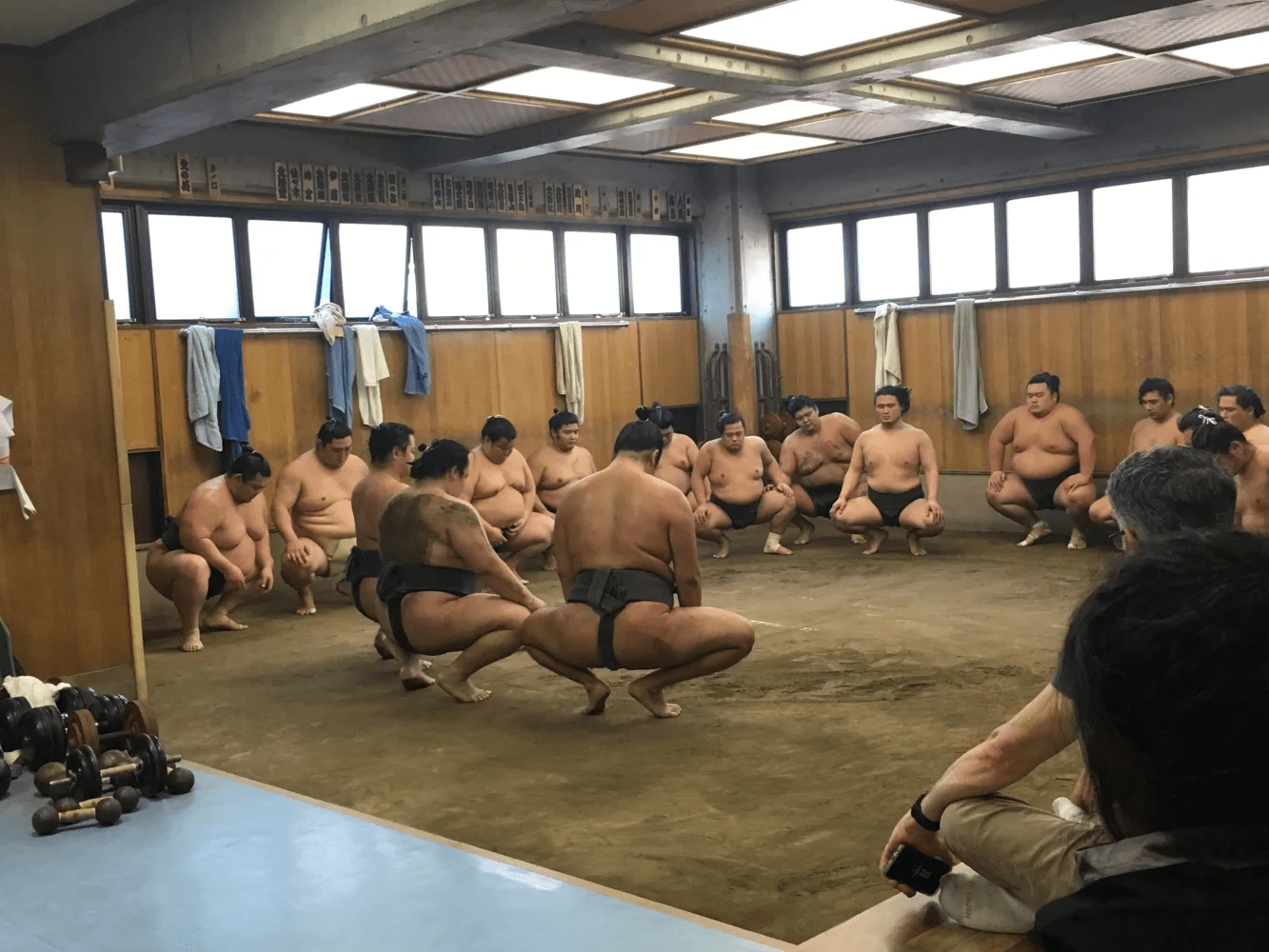
A sumo wrestler's day begins surprisingly early. Many wrestlers wake up between 5 AM and 7 AM and immediately head to the practice ring.
Morning practice begins with repetitive exercises of basic sumo movements. They meticulously perform fundamental training such as shiko-fumi (leg-raising exercises) and sliding step practice. While these may appear simple, they become extremely demanding exercises when performed while supporting hundreds of kilograms of body weight.
The core part of training is called "butsukari-geiko" (collision practice), which involves practical grappling. Wrestlers clash with each other repeatedly, just like in actual matches. Through this intense training, their bodies develop the ability to withstand impacts and refine practical techniques.
Top-level wrestlers complete considerable exercise volume just in morning practice alone. Because of this intense exercise regimen, their bodies are equipped not with mere fat, but with robust muscles and endurance.
Practice typically continues for about 3-4 hours, during which they move almost non-stop. This rigorous training enables them to develop the stamina to endure the intense 15-second exchanges in matches.
Morning practice usually ends around 11 AM, at which point the wrestlers finally have their first meal of the day. After completing their grueling practice on an empty stomach, the traditional "chanko nabe" (sumo stew) awaits them.
Sumo Stables Build Bodies with Traditional Chanko
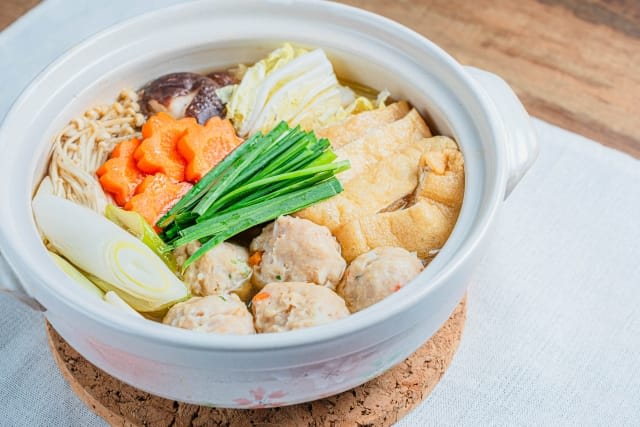
Chanko nabe is not merely a meal for sumo wrestlers, but an important traditional food that forms the foundation of their body building. This nutritious hot pot dish is essential for healthily building large bodies using fresh meats and vegetables.
The characteristics of chanko nabe lie in its nutritional balance and quantity. A typical chanko nabe includes the following ingredients:
- Protein sources:
Various proteins such as chicken, pork, fish, and tofu are placed in one large pot. Chicken is particularly favored because, like wrestlers, it stands on two legs, making it considered auspicious. - Vegetables:
Plenty of vitamin and mineral-rich vegetables are included, such as cabbage, onions, green onions, carrots, daikon radish, and mushrooms. This creates a nutritionally balanced meal despite being high in calories. - Carbohydrates:
After eating chanko nabe, wrestlers consume 5-6 bowls, sometimes even 10 bowls of white rice. They also often finish by adding udon noodles to the remaining pot broth.
Wrestlers are said to consume about 7,000-8,000 calories in this single meal. Considering that the average adult male's daily caloric intake is about 2,500 calories, you can understand the enormous quantity involved.
What's interesting is that chanko nabe itself is actually a very healthy dish.
Each sumo stable has its own unique chanko nabe recipe, and many retired wrestlers are known for opening chanko nabe specialty restaurants. Ryogoku, known as Tokyo's "sumo town," has particularly many chanko nabe specialty restaurants.
By Participating in the Tokyo Sumo Morning Practice Tour in Ryogoku, You Can Actually Observe Sumo Wrestlers' Training
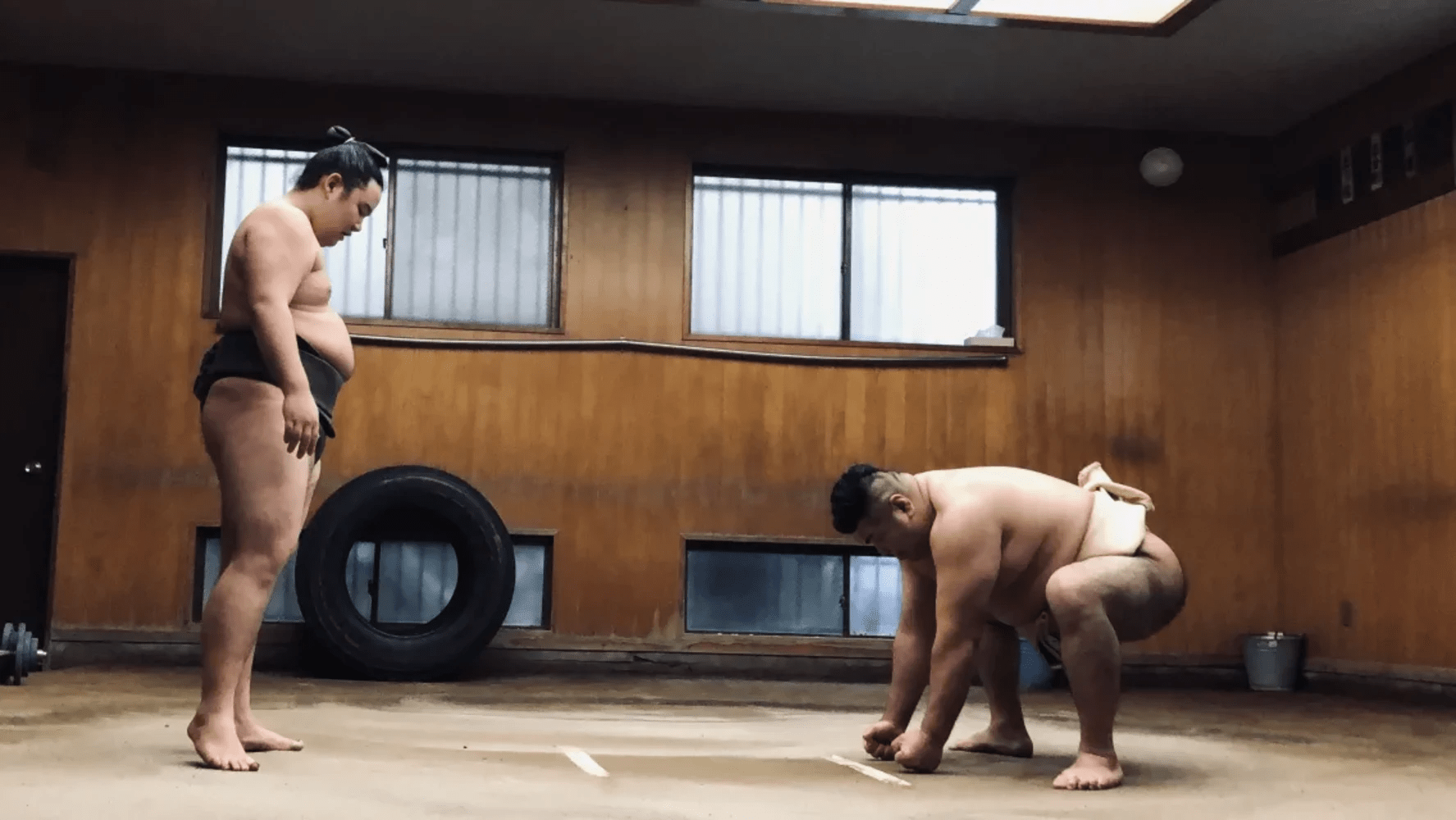
If you want to experience the sumo world up close, the Tokyo Sumo Morning Practice Tour held in Ryogoku, Tokyo is highly recommended. This tour allows you to actually observe wrestlers' morning practice in sumo stables that are normally off-limits to the general public.
Morning practice is part of sumo wrestlers' daily routine, and it's a valuable opportunity to witness their dedicated attitude and traditional training methods firsthand. For foreign tourists especially, this provides an invaluable live sumo experience that cannot be obtained through television or books.
The "Tokyo Sumo Morning Practice Tour in Ryogoku" provided by Magical Trip company involves gathering at JR Ryogoku Station around 8:30 AM and visiting sumo stables with an English-speaking guide. Below, we'll explain the details and attractions of this tour.
The main points during observation are as follows:
- Actual flow of morning practice:
You can observe the flow from wrestlers' basic training to actual matches. Practice continues for about 2 hours, and you'll be overwhelmed by the wrestlers' serious expressions and sweating figures. - Basic sumo movements and their meanings:
Actions such as shiko-fumi and salt throwing all have traditional meanings. The guide will carefully explain these meanings, deepening your understanding of sumo culture. - Interaction with wrestlers:
After practice, you may sometimes be able to take photos with the wrestlers. While wrestlers have stern expressions during practice, they're often friendly afterward and frequently agree to commemorative photos.
When participating in the tour, you must observe certain etiquette. During practice, you must sit quietly and observe, with loud conversations and walking around strictly prohibited. Photography during practice is basically forbidden, and flash photography is absolutely prohibited.
This tour is available only to those 12 years and older, and since you may need to sit in seiza (formal sitting position) on cushions for about 2 hours, those with knee or back problems should check in advance.
Even During Thrilling Matches, Detailed Psychological Warfare Takes Place
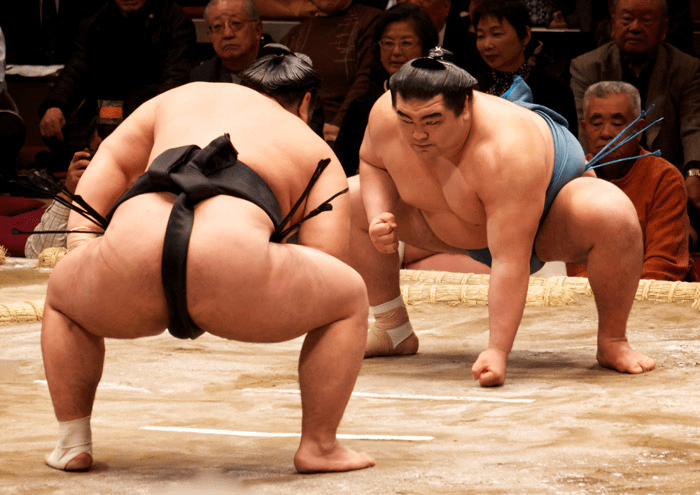
Sumo matches (bouts) often conclude in an instant, but within that brief time, the wrestlers' advanced techniques and strategies are packed in. Understanding the detailed psychological warfare during matches allows you to taste the real thrill of how to enjoy sumo more deeply.
Sumo rules are simple. The wrestler who goes outside the ring or whose body part other than the soles of their feet touches the ground loses. Within these simple rules, wrestlers use various techniques and tactics to aim for victory.
The "tachiai" (initial charge) at the beginning of a bout is a particularly important moment. Wrestlers charge simultaneously at the referee's signal, competing to gain an advantageous position. This momentary movement often determines the flow of the match.
While sumo may appear to be a simple test of strength at first glance, strategies utilizing physical differences are actually crucial. Size isn't everything—agility is equally important, and smaller wrestlers have the advantage of being able to move behind their opponents and utilize the momentum of larger opponents. While large wrestlers excel at techniques like pushing out and force-out, smaller wrestlers frequently use techniques that leverage speed and utilize their opponent's power.
Additionally, sumo has "kimarite" (winning techniques). There are dozens of techniques including push-out, force-out, overarm throw, and underarm throw, and wrestlers use these appropriately according to the situation. Experienced spectators can enjoy the tactical interplay of these techniques.
Sumo bouts often end in a short time, but within that time, the wrestlers' technique, experience, and strategy are condensed. Understanding this psychological warfare will further expand the enjoyment of how to enjoy sumo.
Sumo Wrestlers' Behavior Before and After Matches Also Has Detailed Meaning
Sumo wrestlers perform various ritualistic preparations visible to the audience before their bouts. These series of movements are not mere performance but have deep meaning based on Shinto beliefs.
The important ritual that wrestlers first perform is throwing salt. Throwing salt functions as symbolic purification of the ring, which is a tradition from Shinto. Salt is a symbol of purification and plays an important role in driving away evil spirits and purifying the sacred space of the ring.
Also characteristic is the movement called "shiko"—lifting the feet high and stamping the ground. This is not mere warm-up; clapping hands is to attract the gods' attention, and raising arms toward the sky is to show they carry no weapons. Furthermore, this foot-lifting and stamping movement also has the meaning of driving away evil spirits lurking in the ring.
Wrestlers also engage in psychological confrontation called "nirami-ai" (staring contest). Wrestlers sit in starting positions and gaze at each other with eyes full of preparatory determination. This ritual is repeated several times, and many bouts are psychologically decided during this intense exchange of gazes before actual physical contact.
Also, wrestlers rinse their mouths with water called "chikara-mizu" (power water). This is an act similar to the ritual before entering a shrine, meaning purification of mind and body.
Understanding these preparatory rituals helps you realize that each of the wrestlers' movements has meaning, making how to enjoy sumo viewing more deeply enjoyable.
For Those Who Want to Experience Sumo Wrestlers' Strength, Tours Where You Can Actually Fight Sumo Wrestlers Are Also Recommended
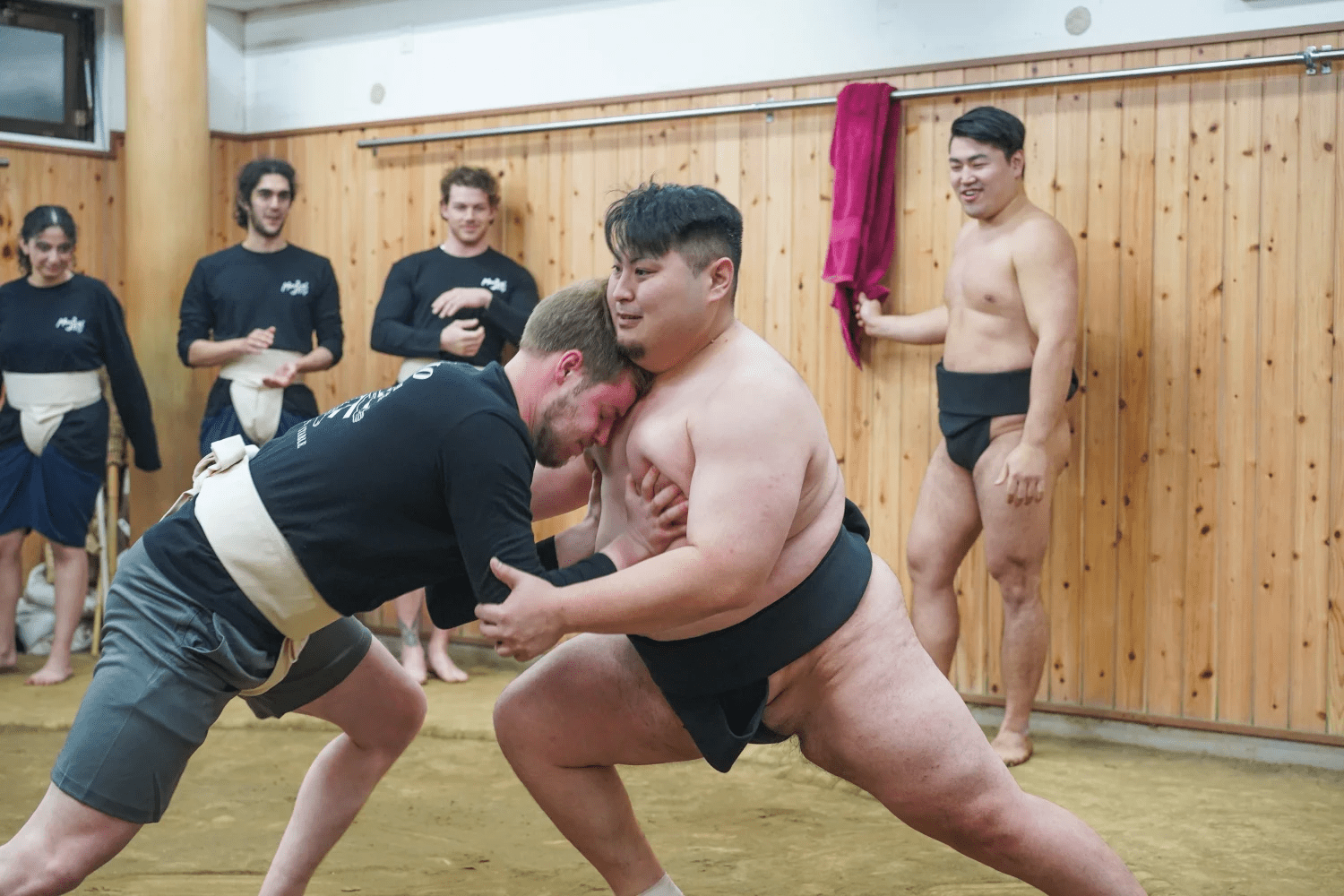
If you want to take a step further into the world of sumo and experience it firsthand, the "Authentic Sumo Experience in Tokyo : Enter the Sanctuary" tour, where you can actually compete against sumo wrestlers, is recommended. In this unique experience, you can not only observe sumo but actually step into the ring and wrestle with wrestlers.
This hands-on tour is held at a conveniently accessible location—20 minutes from Tokyo Station and 30 minutes from Shinjuku Station—and has gained popularity as one form of active Tokyo sightseeing where you can move your body while learning about sumo traditions and culture.
Sumo is an important part of Japanese traditional culture and is deeply connected to Shinto and samurai history. This tour allows you to comprehensively experience everything from such cultural background of sumo to practical techniques.
Experience Content and Participant Reviews
The "Authentic Sumo Experience" tour is a hands-on tour where you can actually participate, not just observe.
Upon arriving at the sumo stable, you first receive detailed explanations about sumo history and wrestlers' lifestyle from a guide. After that, you can tour the dining hall, bath, and training area, getting a glimpse of the wrestlers' daily life.
The greatest appeal of this tour is being able to experience the following:
- Practicing Basic Sumo Movements:
Under the guidance of wrestlers, you can actually experience basic movements like shiko and sliding steps. You'll be surprised at how much more physical strength these movements require than you imagine. - Actual Wrestling Experience with Wrestlers:
Those who wish can actually wrestle with wrestlers. Experiencing their enormous physique and overwhelming strength firsthand is a privilege unique to this tour. - Making and Eating Chanko Nabe:
You can also experience making chicken meatballs with wrestlers and eating traditional chanko nabe. This is a valuable opportunity to learn about wrestlers' meal quantities and the innovations for building their bodies.
Participants have shared comments such as "This was the best experience during my stay in Japan," "I was moved by the wrestlers' kindness and friendliness," and "The chanko nabe was really delicious."
This tour is also popular with families, and children can also experience wrestling with wrestlers. Women are welcomed, and the content is enjoyable regardless of age or gender.
Wrestling with actual wrestlers at a Ryogoku sumo stable and experiencing their strength firsthand—this will surely be a particularly memorable experience among your Japan travels and an excellent way of how to enjoy sumo at its most authentic level.
